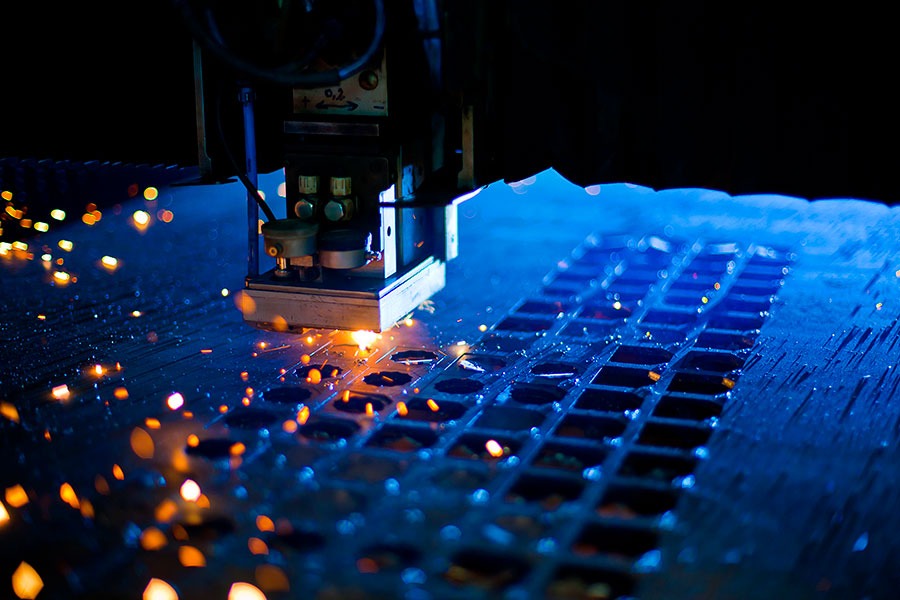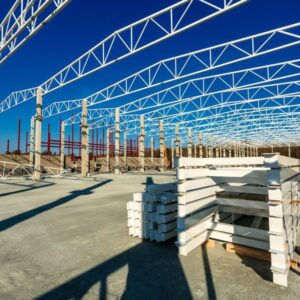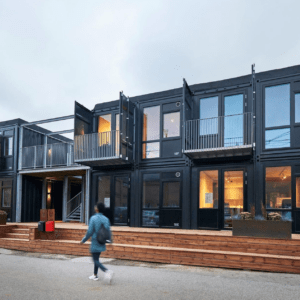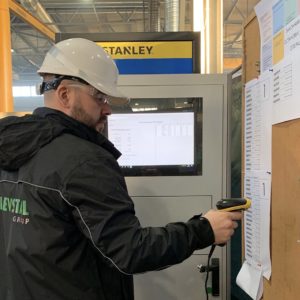Metal cutting is quite a diversified field on its own, with two distinct types – thermal cutting and mechanical cutting. The biggest difference between the two is their approach to the cutting process as a whole. The topic of this article – plasma cutting – is a version of thermal cutting that cuts metal with the help of ionized gas.
The basics of metal plasma cutting
 Plasma cutting, as a whole, is a widespread cutting technique that is often used to cut both sheet metal and thick metal plates. Of course, it has its own advantages and shortcomings, but first, we have to go over what plasma actually is.
Plasma cutting, as a whole, is a widespread cutting technique that is often used to cut both sheet metal and thick metal plates. Of course, it has its own advantages and shortcomings, but first, we have to go over what plasma actually is.
It’s true that three fundamental states of matter that we all know are gas, solid and liquid – but they are not the only ones. Plasma is the fourth state of matter, and it can be found naturally in higher parts of Earth’s atmosphere. It’s also a part of lighting and high-temperature fire.
Gas can also be transformed into plasma via the process of intense heating – which is why plasma’s common definition is “an ionized gas-like substance that conducts electricity”.
It is used quite often in our daily lives, too, with neon signs, plasma TVs, fluorescent lamps, and so on. These are just some of the examples of how plasma is used not only in plasma cutters but in a lot of other appliances around us.
The technicalities of plasma cutting
The process of plasma cutting of steel is also fairly simple when it comes to basic principles. A plasma stream is generated by forcing some type of gas through a narrow nozzle. After that, an external power supply produces an electric current strong enough to perform the ionization process (transforming gas into plasma – which is why it’s often called plasma arc cutting). The cutting process includes two steps – melting the workpiece with plasma and blowing away the molten metal.
There are three basic parts that are used in a basic plasma cutting process (without variations): power supply, circuit, and torch. The main purpose of a power supply is quite obvious – it has to provide energy for the plasma arc to remain after the ionization process. The most common open circuit voltage ranges from 240 to 400 VDC (Volts of Direct Current).
Starting circuit’s purpose is also relatively obvious – it is used to start a high-intensity pilot arc to ionize the flowing gas. Some of the more common usages of a starting circuit are using either a moving electrode or a “blowback start” technique to initiate the ionization process. In most cases, the AC voltage produced is between 5000 and 10000 volts and at ~2 MHz.
The last, but not the least, is the torch a part of the plasma cutter that keeps other parts together, torch is used to hold both the electrode and the consumable nozzle, both of which are constricting and maintaining the plasma arc in place. The torch is also used to provide cooling to other parts of the appliance, and it can use either water or gas to do that.
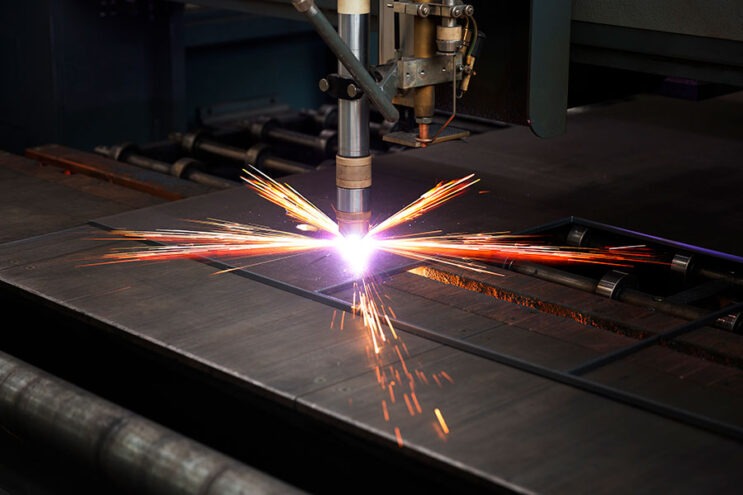
Plasma cutting process variations
That’s not to say that the metal plasma cutting process is perfect as it is – there is still room for improvement, be it about cutting speed, cut quality, arc stability, or something else. As such, there are several different variations of the plasma cutting process that can be distinguished:
- Water injection. As the name suggests, the difference between conventional steel plasma cutting and using water injection is the water stream that gets injected into the plasma arc. This results in a bigger constriction degree and increases the overall temperature of plasma (up to 30000 degrees Celsius). Other advantages include higher cutting speed, reduced nozzle erosion, and improved cut quality.
- Air plasma. Surprisingly enough, a gas that plasma is formed from can be replaced with just air. The same goes for the cooling part of the process – water can also be replaced by air. However, it’s not that simple – first of all, a special electrode is required for air to generate plasma, with either hafnium or zirconium on a copper holder. While it is true that using air instead of an expensive gas of sorts is supposed to be cheaper, it’s not that one-sided in reality – the regular tungsten electrode is far cheaper than the hafnium-tipped one, so the price advantages are not as obvious in this regard.
- Dual gas. In this case, a secondary gas stream/shield is introduced alongside the primary one – around the nozzle. The main purpose of this is the increase in the effectiveness of a “blow away” of the dross and the heavier constriction of the plasma arc. It also helps with cutting materials faster and reduces top edge rounding.
- Water shroud. Water does not have to be injected into the plasma stream, either – it can be used as a shroud to reduce noise, fumes and improve the lifetime of a nozzle. In some cases, the entire workpiece can be submerged under ~60 mm of water, as an alternative to a water shroud. On the other hand, since water shroud does not affect constriction levels, there are no noticeable improvements in terms of cutting speed, cutting quality, and other cutting-related parameters.
- High tolerance plasma. While comparing different types of cutting systems, it’s easy to see that laser cutting is the most precise one and has the highest cut quality. The introduction of HTPAC (High Tolerance Plasma Arc Cutting) was an attempt to bridge a massive gap of cut quality between laser cutting and other types of thermal cutting. HTPAC operates with an incredibly thin plasma stream that is expelled out of the nozzle in a swirling fashion. Some specific variations of HTPAC even offer a dedicated magnetic field around the arc to maintain the rotation velocity and stabilize the plasma jet in its entirety. The cutting quality is, indeed, higher than with a conventional plasma arc, and the distortion of the material is noticeably smaller in comparison, but it also can’t cut materials thicker than 6 mm, and the cutting speed is lower than with the regular plasma cutting process.
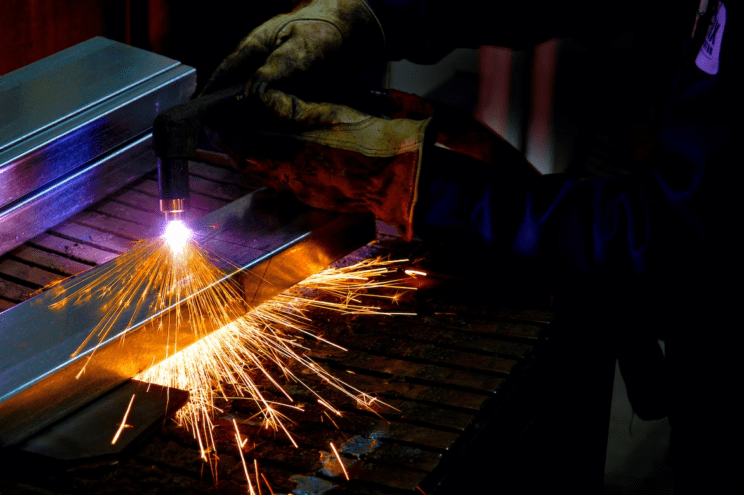
Common plasma cutting software features
A relatively common example of plasma cutting software is CAD/CAM nesting software, which is something that is capable of setting up and controlling pretty much all of the different aspects of plasma cutting as a process. Some of the commonly used parameters that can be customized here are cut speed, cut height, gas pre-flow, arc current, pierce type, voltage, and so on.
It’s also not uncommon for plasma cutting software, in general, to provide a host of other features – bridge cutting, skeleton cutting, collision avoidance, multi-head cutting, chain cutting, common line cutting, and more.
All of this allows for a much optimized and productive outcome of the plasma cutting process as a whole, with an easier setup process, improved cut quality, and faster cutting cycles.
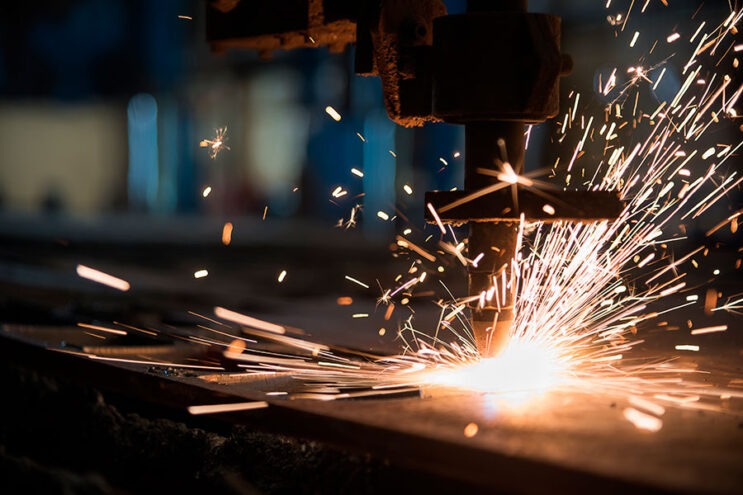
Plasma cutting is a widely used technology that can be applied to a multitude of markets and industries:
- Construction equipment;
- Pipes/pipelines;
- General fabrication;
- Farming/ranching;
- Signs and ornaments;
- Civil service construction;
- Shipbuilding;
- HVAC;
- Mining, and more.
Conclusion
Despite the fact that plasma cutting is a relatively complicated process, the market for plasma cutting appliances and services is wide and highly competitive. Nowadays, plasma cutting (as well as other metal cutting types) is widely used to create an abundance of details and appliances for our everyday lives, and for long-term projects, such as buildings, infrastructure, and so on.
One such company is Levstal – a steel construction company that offers a wide array of services in the steel construction field and has been on the market since 1991. Levstal offers a personalized approach to each and every one of its clients from different parts of the world – from Japan and North America to England, Finland, France, Belgium, and more.
Their plasma cutting services include 3 Hyperterm Plasma HRP 260 metal cutting appliances, with the capability to cut black sheet metal from 0,5 mm to 30 mm thick and stainless steel metal up to 20 mm. Metal sheets could be up to 2500 mm in width and 12000 in length.



